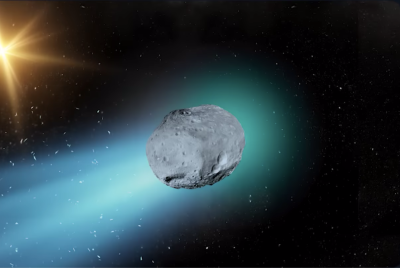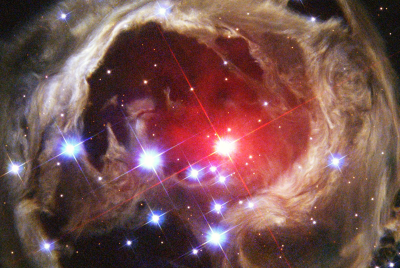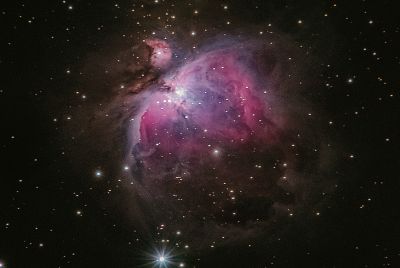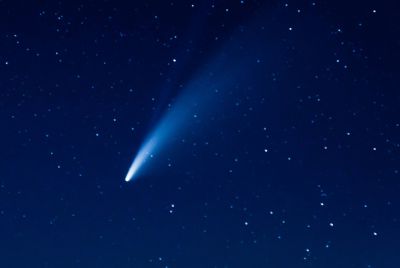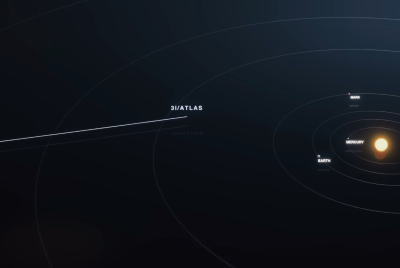Is 'City Killer' Asteroid Still Hitting Earth? Change Of Trajectory Now Has Moon As Target - What Could Happen?
The asteroid, estimated to be about the size of a 10-story building, still carries a slight chance of hitting the Moon

The threat of a so-called 'city killer' asteroid striking Earth has long captured the imagination, fuelling both scientific inquiry and public concern. But what if that threat were to shift course? Recent discussions suggest a possible change in the trajectory of asteroid 2024 YR4—now pointing towards the Moon as a potential target. This raises a critical question: what might the consequences be?
Asteroid 2024 YR4 has sparked alarm over the past few months. Initially, researchers identified a small but significant chance of it colliding with Earth on 22 December 2032. However, new calculations indicate that the odds of an Earth impact have changed.
A Shift In The Asteroid's Path
At first, there was a tiny possibility that asteroid 2024 YR4 would strike Earth on 22 December 2032. Earlier calculations from NASA's Near-Earth Object (NEO) Studies showed a 3% impact probability. Within weeks, NASA re-evaluated the situation, reducing the risk to only 0.28%.
Additional study and examination performed by the James Webb Space Telescope in late March indicated that the asteroid's chance of impacting Earth is now almost nonexistent. However, the possibility of an impact hasn't been completely eliminated.
#Asteroid 2024_YR4 may collide with the Moon 🌙.
— Tony Dunn (@tony873004) April 2, 2025
Its nominal trajectory, based on updated observations, shows a lunar impact on Dec 22, 2032.
But the odds of collision remain low. pic.twitter.com/ayg7KgfZXp
As reported this week by the science and technology outlet, New Scientist, astronomer Andrew Rivkin noted that the asteroid could still strike the Moon directly. Rivkin, a planetary scientist at Johns Hopkins Applied Physics Laboratory and co-writer of the report analysing the telescope's data, found a 2% probability that the asteroid could hit the Moon in 2032.
This represents a minor increase from NASA's February estimate of a 1.7% chance. Scientists will use the Webb telescope to examine the asteroid again in May 2025 before it travels into the far reaches of the solar system for several years.
The James Webb Space Telescope is a robust observatory for studying the universe. It can investigate faint bodies, and numerous international space agencies utilise its findings.
What Is An Asteroid?
NASA describes an asteroid as a small body made of rock or metal that travels around the Sun. These bodies are usually located in the main asteroid belt, which lies between Mars and Jupiter. Asteroids are smaller than planets but larger than meteoroids.
Asteroids are remnants of the creation of our solar system. Our solar system started roughly 4.6 billion years ago when a massive cloud of gas and dust caved in. During this event, most of the material moved to the cloud's centre and became the Sun.
As the cloud condensed, some of the dust formed planets. However, the objects in the asteroid belt never got to join together and become planets. They remain as remnants from that distant period when planets were taking shape.
Furthermore, NASA points out that all asteroids are unique. Their formation in various locations at different distances from the Sun resulted in diverse asteroid compositions. Asteroids don't possess the rounded shape of planets; instead, they exhibit irregular and sharp outlines.
Certain asteroids can measure hundreds of miles across, yet many more are no larger than pebbles. While most asteroids are composed of diverse kinds of rocks, some also include clays or metals, such as nickel and iron.
So, with this background on asteroids, what more do we know about 2024 YR4 and its potential encounter with the Moon?
The 2024 YR4 Asteroid: Key Details
Discovered in December 2024, 2024 YR4 is a genuine asteroid. Though this football-field-sized object initially showed a slight risk of hitting Earth in 2032, recent NASA data indicates it presents no substantial danger to our planet in 2032 or the future.
The #JWST has been scheduled for emergency observations of asteroid 2024 YR4, a recently discovered near-Earth object with a 2.3% chance of impacting Earth in December 2032.
— Erika (@ExploreCosmos_) February 11, 2025
Detected in December 2024 by NASA's Asteroid Terrestrial-impact Last Alert System, 2024 YR4 is… pic.twitter.com/ucI1y1OmLG
How it was found and early worries:
On 27 December 2024, Chile's Asteroid Terrestrial-impact Last Alert System (ATLAS) telescope discovered 2024 YR4. The first calculations showed a small but concerning chance of an Earth impact on 22 December 2032.
Dimensions:
Initially, the 2024 YR4 asteroid was believed to be as large as a football field. However, recent infrared observations from NASA's James Webb Space Telescope have refined its size estimate. It's now calculated to be 174-220 feet (53-67 meters), equivalent to a 10-story building.
Updated path and lowered danger:
As further observations were gathered and incorporated into the asteroid's orbit calculations, NASA's Center for Near-Earth Object Studies (JPL) fine-tuned its trajectory models.
Ongoing monitoring:
Scientists are dedicated to tracking the asteroid's path, and NASA's public websites are continually updated with the latest findings.
What Happens If 2024 YR4 Strikes The Moon
NASA states that asteroid impacts have altered the Moon's landscape for ages. These collisions are also responsible for craters on Earth. The American Museum of Natural History reports that asteroid impacts were far more prevalent on both the Moon and Earth billions of years ago.
Still, these events have diminished through the ages, leading to 'the relatively peaceful present.' The exact outcome of an asteroid of this magnitude striking the Moon is still to be determined. Nonetheless, NASA asserts that the Moon's orbit would not be affected.
© Copyright IBTimes 2025. All rights reserved.





